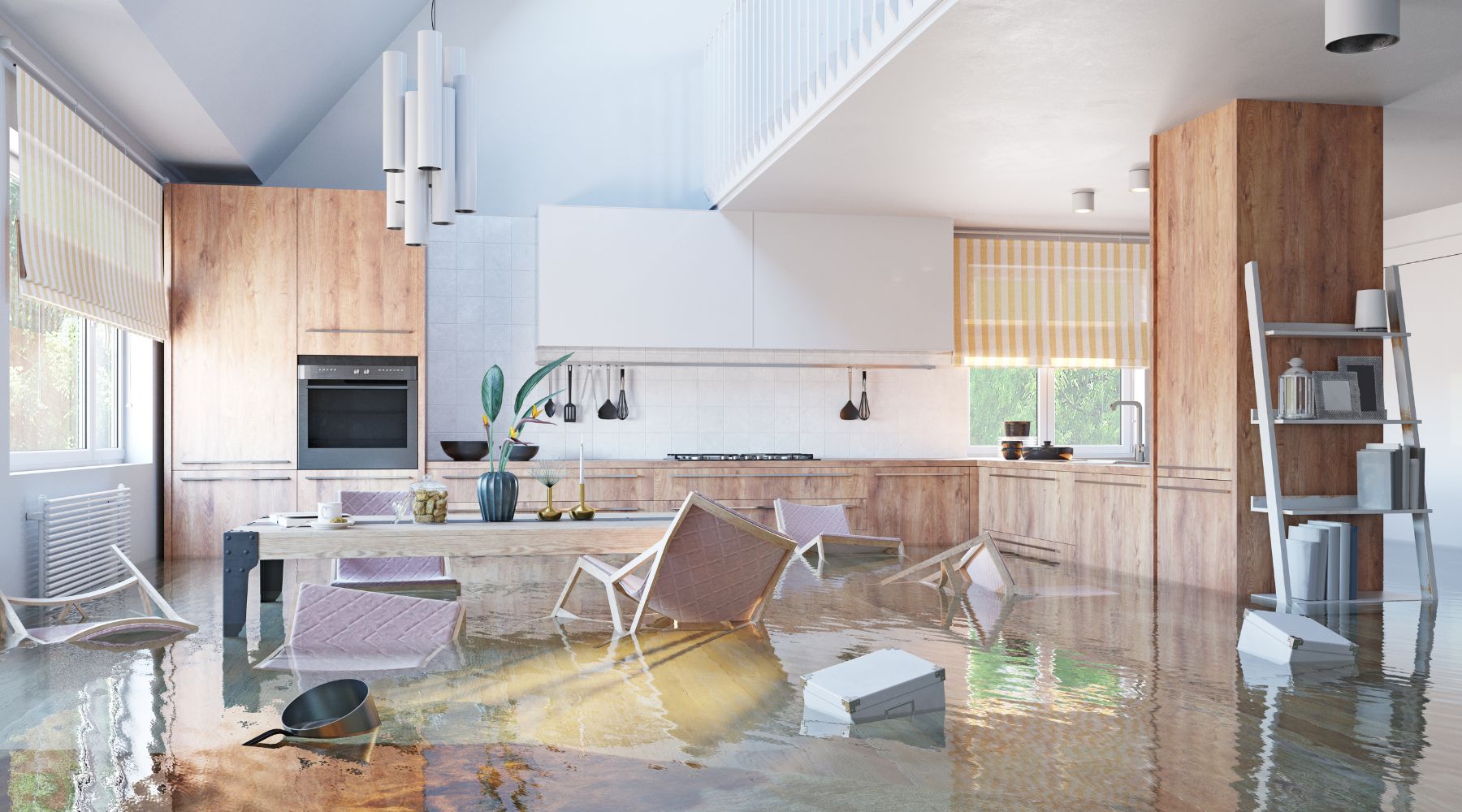Flooding continues to rear its ugly head as a significant risk to homes and people across Australia. According to the Chair of the Insurance Council of Australia (ICA), Steve Johnston, it’s the country’s “most costly and predictable peril”.
However, the ICA found in its most recent Insurance Catastrophe Resilience Report that despite 242,000 Australian homes being at severe or extreme risk of flooding, around 77% of them aren’t covered by flood insurance. Whether that’s due to the cost of cover, a lack of options or simply because you haven’t looked into it, it’s crucial to understand what flood cover can offer you.
What is flood insurance?
Flood insurance is a part of home insurance policies that covers your property and contents for damage due to flooding. It’s usually included as standard in your home and contents insurance but is available as an optional extra only with some insurers, which would require you to pay an additional premium to extend your coverage.
Although each insurer will have its own terms and conditions for what constitutes a flood, you can expect at least some of the following flood sources to be included in your coverage:
- Canals
- Creeks
- Dams
- Lakes
- Reservoirs
- Rivers
- Any other naturally occurring watercourse
However, a big one that isn’t covered is flooding caused by ocean activity. If your home is flooded due to high tides, rising sea levels or simply big waves, your flood cover won’t be able to help you out.
How are my flood insurance premiums calculated?
The main way premiums are assessed when it comes to flood coverage is risk. Insurers make use of the National Flood Information Database (NFID), which was developed by the ICA to provide details on the risk posed to homes around Australia. Today, this database has information on 13.7 million homes, but it isn’t publicly available. If your home is deemed at risk of flooding, your premiums will be more expensive or, in extreme cases, you may be denied insurance entirely.
How much extra does flood insurance cost?
It’s hard to determine exactly how much flood insurance costs if it’s included in your main policy coverage. However, we’ve taken out quotes for home and contents insurance with and without flood cover as an optional extra to see how much more you’ll pay if you live in a flood-affected area:
| City/town | Ave. H&C quote | Ave. H&C with flood | Ave. cost difference | % increase |
|---|---|---|---|---|
| Sydney | $1,226 | $1,263 | $37 | 3.00% |
| Tweed Heads | $1,591 | $1,635 | $44 | 2.70% |
| Macksville | $1,921 | $2,006 | $84 | 4.40% |
| Taree | $807 | $1,148 | $341 | 42.30% |
| Brisbane | $949 | $1,968 | $1,019 | 107.50% |
| Tennyson (QLD) | $1,439 | $3,217 | $1,778 | 123.50% |
| Quotes based on a freestanding, non-elevated, single-storey house built in 2022 and lived in by the current owner since then with no mortgage on the property and no home insurance claims in the last five years. The wall material is double brick and the roof material is Colorbond, with an alarm system installed. Home replacement cost is $500,000 and contents replacement cost is $50,000. Home excess is $1,000 and contents excess is $750. Quotes obtained from five leading insurers on 5 December 2025. | ||||
As you can see, the cost of adding flood cover can range from as little as $37 for a home in Sydney to almost $1,800 in the suburb of Tennyson in Brisbane. In flood-affected areas, especially in Queensland, adding flood cover can more than double the cost of your home and contents insurance. However, the exact quote will depend on factors like where exactly you live, how your house is built and whether it’s elevated.
Another factor that can increase your premium is how many claims you’ve made in the last five years. If the flood damage to your home is relatively minor and not much more than the cost of your excess, paying for it yourself might help you save on coverage down the track.
Should I take out a flood insurance policy to protect my home?
Whether you should take out flood insurance depends on your individual situation. If you want to get an idea of whether your home may be considered a flood risk, and therefore whether you should take out home insurance with flood cover, consider the following:
- Has there been flooding in my area in the past?
- Am I near a body of water (especially downhill from one)?
- Am I living in a coastal area?
- Have there been other extreme weather events in my city, town or state or territory in recent times?
If you live in an area with no history of flooding and aren’t near any bodies of water, your chances of damage are understandably lower. This doesn’t necessarily mean that you shouldn’t look for flood coverage on your home and contents insurance policy, though, as it’s likely that you’ll be paying very little extra, or none at all, for flood coverage.
Of course, if you already have home and contents insurance, you might be covered for flood damage already and not realise it. Check your policy’s Product Disclosure Statement (PDS) if you’re unsure, which outlines what is and isn’t covered by your policy.
Renting and flood cover
If you’re a renter living in an area at risk of flooding, you can still look at taking out a contents insurance policy that offers flood cover. That way, your valuables can still be covered even though you don’t own your home. Even in furnished rentals, you might decide that some of your belongings are valuable enough to warrant a policy being taken out. For landlords, your specialised insurance policy should also offer cover for flooding.
Flood insurance pros and cons
Pros
-
Covers you if your home is flooded
It does what it says on the tin: flood insurance covers you for a variety of damage that your house and/or belongings may sustain.
-
Inexpensive for lower-risk customers
If you want to add flood cover to your home and contents insurance policy, it may only cost a small amount, depending on your risk (or be built into your policy as is).
-
Peace of mind
For homeowners living in a higher-risk area, covering for flood damage can ease concerns about being left with a hefty bill for extensive damage.
Cons
-
Doesn’t cover all types of flood damage
Any flooding caused by action of the sea, such as an increase in sea level, increased wave action or a storm surge, is unlikely to be covered by your insurance policy.
-
May not be necessary
If your property is at a very minimal or non-existent risk of flood damage, it might not be worth taking out cover if there’s an extra cost associated.
- Insurance Catastrophe Resilience Report: 2024-25 - Insurance Council of Australia
- Insurers have detailed data on your home’s flood risk. So, why don’t you? - The Conversation









